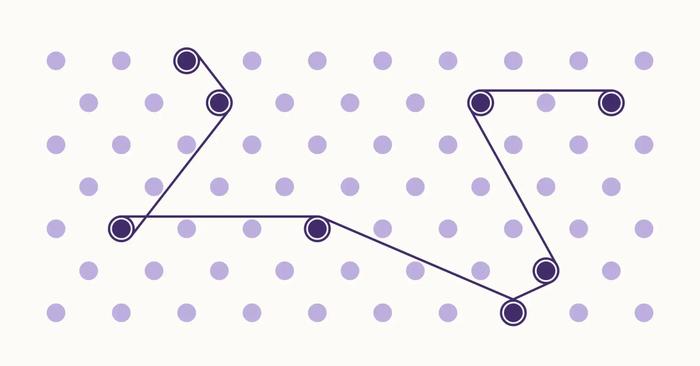The world of sales has changed in recent years. Large number of sales reps are beginning to notice that buyers come much more prepared to a pitch, having researched products before initiating contact.
Consultative selling meets this challenge head-on. It goes beyond making a pitch and helps sales reps understand the homework your customer has already done and add value beyond it.
Check how to connect your insights and solutions to what the buyer already knows, filling in the gaps and providing real value.
Understanding consultative selling
Consultative selling is like being a helpful advisor. You're there to figure out what they need, even if they don't know it yet. It means asking the right questions and listening to their answers. Then, you use what you've learned to suggest solutions that work for them.
Consultative vs. solution selling: what's the difference?
When it comes to selling, two styles often pop up: consultative and solution selling.
Let's break these down to see what sets them apart.
Consultative selling helps you see the wider picture.
Avoid just scratching the surface here – ask questions that help you to understand every layer of the customer's world.
Your goal is not just to sell them something, but also to guide them towards their bigger goals. It's strategic, with a focus on building relationships that last.
Solution selling, on the other hand, is about here and now.
It spots an issue and quickly throws a lifeline. You've got a problem? Here's the tool to take care of it. This approach is about immediate solutions, matching a product directly to a need. Quick fix, and it’s done.
While the consultative selling process takes its time, building a foundation for long-term growth, solution selling goes straight for the quick win.
Both have their place, but knowing when to use which approach can make all the difference.
Product vs. solution
- Product: This is something you can touch or use, like a gadget or an app. It's made without a specific buyer in mind.
- Solution: This is often tailor-made. It combines different products or services to tackle a specific customer problem. It all comes down to the ideal match for the demands of the client. Consultative selling usually ends with a fitted solution.
In sales, solutions beat products hands down. Solutions are custom-fitted to tackle real-world problems. It's like choosing a bespoke suit over a one-size-fits-all.
Consultative selling turns you into a trusted partner. This approach is more about the value you bring to the table than the stuff you sell.
So, keep it simple and straightforward. Help your customers by understanding their challenges, and offer solutions that make a difference. That's the essence of consultative selling – but we’ll go into more detail below.
7-steps to winning deals through consultative selling
Switching to a consultative selling approach changes the game when it comes to closing deals.

Follow this 7-step guide to navigate from knowing your customers deeply to sealing deals successfully.
1. Preparation and research
Jumping straight into a sales pitch? Hold up. The key to consultative selling is getting a solid understanding of who your leads are before you even think about selling. Sales reps need to know their industry, their role, and the hurdles they're facing so they can set the stage for meaningful conversations.
Four tips to finding the right leads fast
- Define your ideal customer: Picture who really needs your solution.
- Scout the right spots: Find out where your potential customers spend time online. LinkedIn, industry forums, and social media are all good bets.
- Engage, don't pitch: Start conversations. Share insights. Be helpful.
- Use tools: CRMs can help you track potential leads right away, so start using one as soon as possible.
Research customer needs and offer relevant findings
To deeply understand prospective customer needs, start by exploring their digital footprint. Check their website, social media presence, and online reviews they left to grasp the topics they discuss and the feedback they receive.
Next, engage in social listening using tools like Google Alerts or social media monitoring platforms to catch real-time mentions of your company and its products. Additionally, you can verify the comments they make about your competitors.
Check industry reports, news articles, and trend analyses for a bigger picture – to identify common challenges within their sector and note how your leads might – or want to – address these issues.
If feasible, directly interact with your leads through surveys or informal conversations, asking key questions such as “What’s your biggest challenge right now?” to gain direct insights.
Finally, analyze all gathered data to detect recurring themes, challenges, or desires.
2. Engaging the Lead
After gearing up with the right information, the next move is to reach out. This stage revolves around genuine interaction. A balanced exchange requires listening attentively and not fighting to speak.
Listen, listen, listen
Active listening goes beyond catching words. It involves fully comprehending the intent and concerns behind them. Reflect on what they've said and pose clarifying questions. Taking the time to understand their situation shows that you care.
During the conversation, focus entirely on what the lead is saying. Avoid distractions and instead nod and make affirming sounds to show you're engaged if needed. Repeat back what they’ve said in your own words to confirm understanding. Your goal is to make the lead feel heard and valued.
Lead the conversation
To lead is not to overshadow but to guide the discussion toward uncovering the lead's pain points. Your role is to set the tone, the pace, and ensure that your lead has a lot of space to speak.
Begin with a broad, open-ended question about their current challenges or goals.
Based on their response, use prepared questions to gently guide them towards revealing deeper insights. Always allow the conversation to flow naturally, but be ready to steer it back on track if it diverges too much from the core topic.
Ask consultative selling questions
Engage with open-ended questions that prompt your leads to elaborate on their business, obstacles, and objectives. Respond to their answers with follow-up inquiries that delve deeper. This method reveals critical insights, allowing you to customize your solution with precision.
Start with questions that encourage the lead to talk about their situation, such as “Can you tell me about the challenges you’re facing with X?” Follow their answers with questions that probe for more details, like “What impact has that had on your business?”

Active listening, skillful conversation guidance, and thoughtful questioning can all mark the journey of engaging a lead effectively in consultative selling. That’s how you become a trusted consultant – far beyond the traditional sales pitch.
3. Identifying needs
Analyze their concerns to figure out what's bothering your prospect. This means getting to the heart of their main issues. Do this by asking the right questions.
For instance, if they're losing customers, don't just accept the fact and nod.
Ask, "How do you follow up with customers now?" or "What are churning customers telling you?" Thishelps spot the real problem, like maybe their follow-up process is weak or customers aren't feeling valued.
Try to understand
If a prospect struggles with supply chain woes, don't jump to offer a quick fix.
Probe deeper. Try, "What's going wrong with your suppliers?" or "How do demand changes affect your inventory?" These questions can uncover specific troubles like poor communication with suppliers, or bad demand forecasting.
Knowing your prospect's needs shows you understand their unique challenges. When you tailor your solutions to their needs, you will be more likely to win them over.
4. Solution crafting
You can now begin crafting your solution. Make a pitch that resonates by utilizing what you know. Make customers feel as though you have tailored your product for them.
Show how your offer tackles their specific issues. Your pitch should reflect their unique challenges. You're aiming for a "this is just for me" reaction.
Show value proposition
When you talk about your solution, focus on teaching, not selling. Break down how it works in simple terms. Connect the dots between their problems and how your solution fixes these. Use stories of similar clients or short examples. In this way, they can see the value you're offering on a real-life level.
Become a trusted partner
You shouldn’t come across as another salesperson. You want to build trust by showing you've really thought about their needs and have crafted something that speaks directly to them. Do that, and you will be able to distinguish your solution and cement your position as a trusted advisor.
5. Collaborative problem-solving
Now, let's talk about solving problems with your prospects. You work on this step as if you are on the same team as your client.
Get them engaged in the conversation
When they talk, don't just wait for your turn to speak. You're trying to catch every detail. This way, you find out what's really bugging them. Sometimes, they might not even see the full picture until you help them fill in the blanks.
Brainstorm as much as possible
Now that you're both on the same page about the problem, start brainstorming solutions together. Throw ideas back and forth. "What if we tried this?" or "How do you feel about that option?" Keep it open. This is a dialogue, not a monologue, but don’t overshadow your prospect by talking too much.

You're helping them see how your solution fits into solving their problem. They won't give you a try if you don't show them the product's worth.
6. Adapting and enhancing the consultative sales process
The consultative sales process is constantly changing, and so should your sales process. You have to stay flexible and tune into your customers' needs.
Keep adapting
First up, always be ready to change your approach. What works for one potential customer might not click with another. Pay attention to their feedback. If they're hinting at something, take it seriously. Maybe they need more info, or perhaps a different solution fits better? Adjust your sails as needed.
Create valuable content
You want to give your potential clients something that makes them think, "Wow, I never looked at it this way." Your sales enablement content should solve problems before they even have to ask. Think guides, how-tos, and real-life success stories.
Make it so good that they can't help but see the value in what you're offering.
Remember, this is a two-way street. Keep the conversation going. Ask them, "Is this helpful?" or "What else do you need to know?" This way, you're building a partnership.
7. Negotiation and closure
In consultative selling, negotiation is less about wrestling over prices and more about making sure that your solution contributes to the customer's success.
Demonstrate how your solution will benefit them in the long run – but in addition to satisfying their immediate demands. If there's pushback on price, steer the conversation back to benefits and outcomes. "Given the impact this solution can have on your efficiency, the investment pays off in just a few months. What do you think?" Show them the cost of inaction. The FOMO phenomenon is known – and widely used in sales – for a reason.
Closing strategies for success
Closing in consultative selling feels natural when you've built a solid relationship. To close your deal smoothly, follow these steps:
- Summarize the journey: Remind them what you've covered together with the potential clients. "We started looking at X problem, explored Y solutions, and here we are with a plan that hits all your goals. How does that sound?"
- Ask for the close: Sometimes, all it takes is to ask. After outlining how your solution fits their needs, simply ask, "Does this look good to you? Shall we go ahead with the proposal?"
- Address last-minute hesitations: If they're hesitating, there's likely an unresolved concern. Dig in gently, "I sense there might be some hesitation. Can we talk about what's holding you back?"
Using consultative selling to close means you've spent time understanding and building a solution together. At this point, closing becomes a natural step forward, not a high-pressure moment. Keep focusing on how your solution makes their life better, and the deal will close itself.
Implementing the consultative selling process in your strategy
Take a closer look at your customers, and find out what makes them tick.
To integrate consultative selling into your sales strategy, follow these steps:
1. Train your team
This is the very first step in adopting consultative selling.
Focus on essential skills such as active listening and tailoring solutions to fit customer needs. Bring in examples from the real world and set up practice scenarios. All of that helps the team grasp concepts better and apply them effectively.
Real-life situations make the lessons more relatable. They also prepare your sales professionals for the variety of challenges they'll face in the field.
The goal is to equip your team not just with knowledge, but with the ability to think on their feet and adapt their approach to each unique customer interaction.
2. Build a learning culture
To really succeed at consultative selling, create a culture where learning never stops. Push your team to keep up with customer industries and the challenges they face.
Make sharing insights a regular thing. Maybe start an internal blog where team members can post what they've learned or hold weekly meetings dedicated to discussing new trends and solutions.
Keep everyone sharp and ready to meet customers right where they are. Stay curious and always looking for ways to understand and help your customers better.
3. Update sales metrics
Revamp your approach to measuring success by focusing on more than just mere sales figures. Include metrics like customer satisfaction scores and the effectiveness of the solutions you're offering.
For example, after closing a sale, send out a survey to gauge how satisfied the customer is with the solution provided. Use a scale from 1 to 10 to make it easy for them to respond. Also, track how often your solutions solve the customer's problem on the first try.
Consequently, you align your team’s efforts with the core goal of consultative selling: building strong, lasting relationships with satisfied customers.
4. Improve CRM use
Upgrade your business operations to fully capture the data from each customer's journey. They should detail their problems, your solutions, and the outcomes.
You might consider using a CRM for this purpose. Note down specifics like issues raised during calls, the personalized solutions offered, and the follow-up results.
For example, if a customer flags a billing process issue, record this in the CRM along with the billing solution you suggested and how it helped streamline their operations. With this setup, your CRM becomes a powerful tool and your team gets more context for smarter, helping them make more informed decisions.
CRM software like Capsule CRM can help you with this process. It organizes customer information in one place so it’s easy to access and update. This saves time and improves the quality of customer interactions. With all details at their fingertips, your team can provide consistent, personalized service.
5. Create custom sales materials
To support your consultative selling strategy, create a set of sales materials that directly address your customers' needs.
Develop flexible presentations that can be tailored for individual conversations. These will showcase how your solutions address specific challenges. You should also tailor them to a specific user persona or industry if that's applicable.
Include case studies that highlight real-world examples of your products or services solving similar problems for other customers.
When you create customized materials, you catch the attention you need - because they address the potential customer's pain points.
6. Set up a feedback loop
To make your consultative selling process shine, set up a solid feedback loop.
Pick clear ways for customers and your team to share their thoughts. Think surveys for customers and regular check-ins for your team. Make sure you're asking the right questions. You want to know what's working and what's not.
Don't just collect feedback – dive into it. Look for patterns and take action. If customers want clearer communication, rework your sales materials. If your team needs better tools, find out what and get them.
Let everyone know what changes you've made because of their feedback. This shows you're listening and committed to improving. Keep an eye on how these changes play out so you can adjust as you go. Most importantly, build a culture that loves feedback.
It's how you grow, improve, and really connect with your customers and team.
7. Stay patient and keep going
Making the switch to consultative selling is a marathon, not a sprint.
To navigate this transition smoothly, recognize and celebrate every bit of progress. Why? Because acknowledging small victories boosts morale and keeps everyone motivated.
How can you do this? Set short-term goals that are easy to achieve as you adapt. When a team member successfully applies a consultative technique, highlight it in a team meeting.
Maybe even create a 'win of the week' feature in your internal newsletter. These actions reinforce positive behavior and remind everyone that progress – no matter how small – is still progress.
8. Review and adjust
Keep a close eye on your consultative selling efforts.
Regularly check in to see what's working and what isn't. You took feedback into consideration before – now let the hard data speak. Are you generating sales? Who overpromised and under delivered? Can you explain why a specific customer churned at the last mile?
Analyze, make conclusions, continuously improve and adapt.
Benefits of a consultative sales approach: Checklist
Adopting a consultative sales methodology brings a multitude of benefits. Use this list as a checklist for your sales team or stakeholders who don't understand consultative selling… yet.
Builds trust and strong relationships
Consultative selling relies on listening and understanding.
This method shows customers that you're on their side, aiming to solve their problems. Trust grows when customers feel heard. They start seeing you as a partner, not simply a seller. This trust leads to loyalty and better business relationships. Why? Because customers prefer working with someone who gets them.
With consultative selling, any business can turn simple transactions into lasting relationships. It's a win-win. You help customers succeed, and they keep coming back.
Tailors solutions to customer needs
Through detailed discovery, salespeople can customize solutions that directly address those needs. This confirms that solutions match the customer's exact challenges and goals.
As a result, customers feel understood and valued. Their satisfaction skyrockets because the solutions provided aren't generic – they're crafted just for them. This turns just satisfied customers into loyal ones.
Differentiates the offering
Consultative selling sets your offering apart in a crowded market. It focuses on the customer's unique problems and creates solutions just for them.
Using this technique gives you a competitive edge in addition to making your product or service unique. When customers see that you understand their issues like no one else, they're more likely to choose you.
You're the answer they've been looking for, not just another choice. With this strategy, your offering becomes "the one" instead of "one of many." It makes you stand out.
Enables agility and adaptability
A consultative seller stays closely connected with what their customers need, making them agile and adaptable.
They're ready to change their approach as soon as the customer's needs evolve. And that, in turn, keeps the sales process on track and effective.
For example, if a customer's priorities shift, the seller can quickly update their solution to match. Such flexibility means you're always offering exactly what the customer needs, when they need it.
Positions you as a trusted advisor
Offering valuable insights, education, and tailored solutions elevates salespeople beyond mere vendors.
They become trusted advisors and strategic partners. This transforms the buyer-seller dynamic, strengthening the relationship and paving the way for more opportunities.
Each consultative sales rep deeply understands their clients' industries and challenges – and never stops learning more about them. They share knowledge that clients might not find elsewhere. The expertise they possess builds trust, and clients see them as partners rather than salespeople.
Consequently, they are welcomed into strategic discussions, where they can influence decisions, form long-term partnerships, and, of course, increase sales.
Focuses on customer success
Consultative selling puts the customer's goals and success front and center.
Why does this matter? When customers see that you're invested in their success, they might value you more. They're more likely to stick with you for the long haul.
Short-term transactions -> long-term partnerships.
Be there to support them in reaching their goals rather than just making a transaction. Watch the partnerships pour in.
Conclusion
Today, most buyers already know what they want. Consultative selling can bring both sides of the transaction one step closer to sealing the deal. You have to aim to build credibility, provide tailored solutions, and become a trusted advisor as a result. It's not easy, it's time consuming, and it's resourceful - but it's well worth the effort.
Find ways to better manage your sales pipeline and customer relations with Capsule CRM’s free 14-day trial.
Frequently Asked Questions
A consultative selling example is when a sales professional engages in sales conversations to uncover a potential customer's pain points. The consultative sales approach focuses on providing a tailored solution rather than simply selling a product or service.
The 8 steps of consultative selling include researching the prospect's industry, engaging in sales conversations, identifying pain points, asking questions, presenting a tailored solution, addressing objections, closing, and following up. These steps guide the entire sales process.
Consultative B2B sales involve using a consultative sales approach where sales professionals focus on understanding a business's specific needs. By addressing pain points and offering a tailored solution, consultative sellers build long-term relationships with the target audience.
Consultative selling is better because it focuses on understanding the customer’s needs and offering a tailored solution. This sales method builds trust, resulting in a successful consultative selling approach that enhances long-term customer relationships and drives better results.
The principles of consultative selling include understanding the target audience, identifying pain points, and offering a tailored solution. A successful consultative selling approach requires genuine interest in the customer’s needs, guiding them through the entire sales process.
The art of consultative selling involves mastering sales conversations, showing genuine interest in the customer's needs, and providing a tailored solution. It’s a sales method that emphasizes relationship-building and focuses on solving pain points rather than just selling a product.
Traditional selling is about pushing a product or service, while consultative selling focuses on understanding the customer’s pain points. A consultative approach involves providing a tailored solution based on genuine interest in helping the customer achieve their goals.
SPIN selling focuses on specific questioning techniques to uncover pain points, while consultative selling is a broader sales method. It involves understanding the customer’s entire situation and using the consultative sales approach to provide a tailored solution throughout the sales process.
Consultant style selling is a sales method where the sales professional acts as an advisor. Using consultative selling techniques, they understand the customer’s needs and provide a tailored solution, creating value throughout the entire sales process.
Yes, consultative selling is a skill that involves understanding customer pain points, using consultative selling techniques, and offering tailored solutions. It requires sales skills like active listening, genuine interest, and building long-term relationships with potential customers.
Sales professionals in industries requiring complex solutions use consultative selling. B2B sales teams often adopt this consultative approach to better understand the prospect's industry and pain points, creating tailored solutions that drive success for the target audience.




